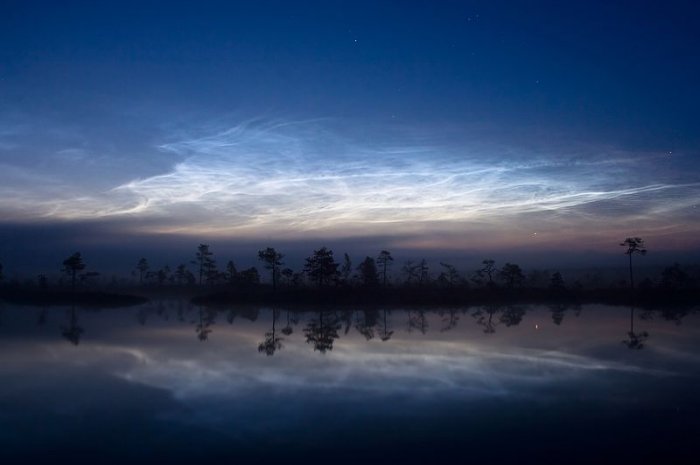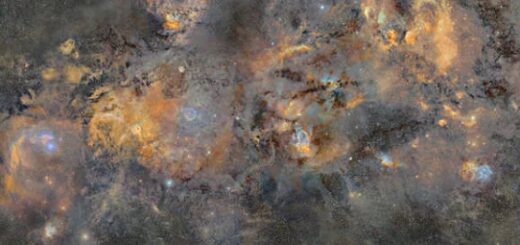Mystery Of The Missing Noctilucent Clouds – Why Did They Suddenly Vanish?
Noctilucent or “night-shining” clouds (NLCs) are mysterious, electric glowing clouds that are beautiful to watch. They were first seen 1885 about two years after the powerful eruption of Krakatoa hurled plumes of volcanic ash as much as 80 km high in Earth’s atmosphere.
These eye-catching clouds were previously only seen over almost exclusively in Earth’s polar regions, but they are now also visible in the skies over the United States and Europe and elsewhere.

At the end of May, 2017 Europeans could observe these electric glowing clouds over the western horizon at sunset. It was then assumed, that the summer season for noctilucent clouds had started.
Then something mysterious happened. The clouds were no longer visible. How can we explain the mystery of the missing noctilucent clouds?
Space Weather reports they have not received any images of noctilucent clouds. This has never happened before in nearly 20 years!
Researcher from the University of Colorado’s Laboratory for Atmospheric and Space Physics may have an explanation that can shed light on the unexpected disappearance of the noctilucent clouds. Using temperature data from the Microwave Limb Sounder onboard NASA’s Aura satellite, scientists discovered there has been a “heat wave” in the polar mesosphere, a region in Earth’s upper atmosphere where NLCs form.
It appears as if relatively warm temperatures have wiped out the clouds.
“In early May, the summer mesosphere was cooling down as usual, approaching the low temperatures required for NLCs,” she says.
“But wouldn’t you know it? Right after May 21st the temperature stopped cooling over the pole! In fact, it warmed a degree or two over the next week. The warming resulted in 2017 being the WARMEST summer mesopause in the last decade, “Lynn Harvey of the University of Colorado’s Laboratory for Atmospheric and Space Physics said.
Noctilucent clouds are very sensitive to variation in temperature.
The icy clouds form 83 km above Earth when the air temperature drops below 145 K (-128 C), allowing scarce water molecules to get together and crystallize on specks of meteor smoke. Even a couple of degrees of warming is enough to obliterate the fragile clouds.
“We don’t know why the mesosphere warmed up,” says Cora Randall, Professor and Chair of the University of Colorado Department of Atmospheric and Oceanic Sciences.
“It’s probably a complex process involving the propagation of atmospheric gravity waves, which affect the flow of air and heat in the upper atmosphere. We’re looking into it.”
The heat wave seems come to an end now and it means noctilucent clouds should return. According to a recent report the clouds were visible again in Hertfordshire on June 15!



 Creators of mankind
Creators of mankind Description of “Tall white aliens”
Description of “Tall white aliens” Where they came from?
Where they came from? About hostile civilizations
About hostile civilizations The war for the Earth
The war for the Earth “Tall white aliens” about eternal life
“Tall white aliens” about eternal life Video: “Nordic aliens”
Video: “Nordic aliens” Aliens
Aliens Alien encounters
Alien encounters The aliens base
The aliens base UFO
UFO Technology UFO
Technology UFO Underground civilization
Underground civilization Ancient alien artifacts
Ancient alien artifacts Military and UFO
Military and UFO Mysteries and hypotheses
Mysteries and hypotheses Scientific facts
Scientific facts


















